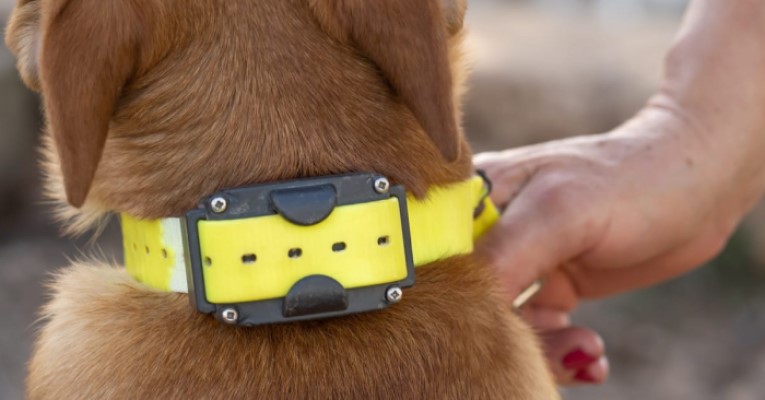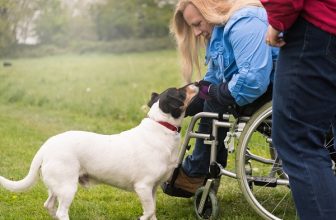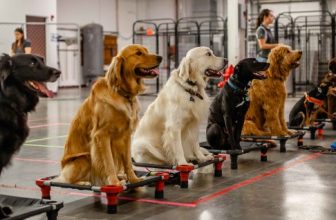
Explore the world of dog training collars to train your furry companion effectively. Learn about different collar types, training techniques, and expert tips for successful dog training.
Training your dog is an essential part of responsible pet ownership. One tool that has gained popularity for effective canine discipline is the dog training collar. In this comprehensive guide, we’ll delve into the world of dog training collars, exploring their types, benefits, usage, and best practices. Whether you’re a new dog owner or looking to enhance your training techniques, this article will provide you with the insights you need to establish a strong bond and effective communication with your furry friend.
Dog Training Collars: A Brief Overview
Dog training collars, also known as remote training collars or e-collars, are devices designed to assist in training dogs by delivering various forms of stimuli, such as vibration, sound, or static pulse, to catch their attention and reinforce commands. These collars are not intended to cause harm but rather to serve as aids in training and improving obedience. They can be a valuable tool when used correctly and ethically.
Types of Dog Training Collars
Static Correction Collars
Static correction collars, also known as shock collars, are designed to deliver a mild static pulse to the dog’s neck when triggered. The intensity is adjustable and should only be used after careful consideration of the dog’s size, temperament, and training needs. This type of collar is effective for reinforcing commands and deterring unwanted behaviors.
Vibration Collars
Vibration collars utilize gentle vibrations to get the dog’s attention. They are often used as an alternative to static correction collars, especially for dogs with sensitive temperaments. Vibration collars can be particularly effective for recall training and reinforcing positive behavior.
Spray Collars
Spray collars release a burst of citronella or unscented spray when activated. Dogs dislike the smell, associating it with undesirable behaviors. Spray collars are a humane way to discourage barking, jumping, and other unwanted actions.
How Do Dog Training Collars Work?
Dog training collars operate through remote control devices that allow you to send signals to the collar worn by your dog. When your dog performs a behavior you want to reinforce, you trigger the collar to deliver a specific stimulus. This stimulus captures your dog’s attention and helps them associate it with the desired behavior.
Choosing the Right Collar
Understanding Your Dog’s Temperament
Every dog has a unique temperament. Some dogs are more sensitive, while others are more resilient. It’s essential to choose a collar that aligns with your dog’s personality and responsiveness to stimuli.
Consulting a Professional Trainer
Before selecting a training collar, consult a professional dog trainer. They can assess your dog’s training needs and recommend the most suitable collar type and intensity settings for effective training.
Researching Collar Features
Different collars come with varying features, such as multiple stimulation levels, range, and waterproofing. Research these features to ensure the collar meets your training requirements and your dog’s comfort.
Proper Fitting and Usage
Ensuring a Comfortable Fit
A well-fitted collar is crucial for your dog’s comfort and safety. Ensure that the collar is snug but not too tight. You should be able to fit two fingers between the collar and your dog’s neck.
Introducing the Collar Gradually
Introduce the collar gradually to your dog. Let them associate the collar with positive experiences by giving treats and praise when they wear it. Avoid rushing the process to prevent any negative associations.
Using Positive Reinforcement
Pair the collar’s stimuli with positive reinforcement, such as treats, verbal praise, and affection. This positive association enhances the effectiveness of the training and strengthens your bond with your dog.
Effective Training Techniques
Basic Commands: Sit, Stay, Come
Start with basic commands like sit, stay, and come. Use the training collar to reinforce these commands. Gradually increase the distractions to ensure your dog follows commands even in challenging situations.
Addressing Behavioral Issues
If your dog has behavioral issues like jumping or excessive barking, use the training collar to correct these behaviors. Be consistent and patient, rewarding desired behavior and redirecting negative actions.
Recall Training: Teaching Recall Commands
Recall training is essential for a dog’s safety. Use the training collar to teach recall commands. Start in a controlled environment and gradually move to more distracting settings.
Distraction Training: Focusing Amidst Distractions
Train your dog to focus on you even when there are distractions around. Use the collar to redirect their attention and reward them for maintaining focus on your commands.
Common Mistakes to Avoid
Excessive Use of Static Correction
Using the static correction feature excessively can lead to fear and anxiety in your dog. Always use the lowest effective setting and prioritize positive reinforcement.
Ignoring Positive Reinforcement
Relying solely on the collar’s stimuli without incorporating positive reinforcement can hinder your dog’s progress. Make sure to balance corrections with rewards.
Inconsistent Training Approach
Inconsistency in training can confuse your dog. Develop a consistent approach to commands and expectations to ensure effective learning.
Troubleshooting Challenges
Collar-Related Concerns
If you notice any signs of discomfort or irritation from the collar, such as rubbing or redness, discontinue use and consult a veterinarian.
Training Plateaus: Overcoming Plateau Phases
Dogs may reach plateaus in their training progress. Stay patient and adjust your training techniques. Introduce new challenges and maintain engagement.
Behavioral Regression: Dealing with Regression
Regression in behavior is natural. If your dog starts displaying unwanted behaviors again, revisit training basics and reinforce positive behavior.
Positive Impact of Ethical Training
Strengthening the Human-Dog Bond
Using dog training collars ethically enhances communication and trust between you and your dog. Your dog learns to associate commands with positive outcomes, strengthening your bond.
Building Confidence in Dogs
Effective training boosts your dog’s confidence by teaching them how to navigate various situations. Confident dogs are generally happier and more well-behaved.
Promoting Positive Behavior in Public
Training your dog using positive methods and training collars ensures they behave well in public spaces, making outings enjoyable for both you and your dog.
Frequently Asked Questions (FAQs)
How do I choose the right collar for my dog?
Choosing the right collar involves considering your dog’s temperament, size, and training needs. Consulting a professional trainer can provide valuable guidance.
Can dog training collars cause harm?
When used correctly and ethically, dog training collars are safe and effective. Avoid excessive use of static correction and prioritize positive reinforcement.
Are there alternatives to training collars?
Yes, there are alternatives like clicker training, positive reinforcement techniques, and harnesses. Choose the method that aligns with your dog’s learning style.
Can I use a training collar on any dog breed?
While training collars can be used on most breeds, it’s essential to consider your dog’s size, temperament, and training goals. Some breeds may respond better to certain collar types.
How long does it take to see results?
Results vary based on the dog’s temperament and consistency of training. Some dogs show improvement within a few weeks, while others may take longer.
Is professional training necessary?
Professional training can be beneficial, especially if you’re new to dog training. A trainer can guide you on collar selection, techniques, and troubleshooting.
Conclusion
Mastering the art of dog training using collars is a rewarding journey that enhances your bond with your furry companion. By understanding the various collar types, proper fitting, and effective training techniques, you can create a positive and enriching training experience for both you and your dog. Remember, ethical and humane training methods, coupled with patience and consistency, lead to successful results and a well-behaved, happy canine companion.




